The Smooth Parasol, Leucoagaricus leucothites, is widespread and common across North America. It is edible but high caution is advised because of a very tricky and dangerous lookalike. This is a species to know because it commonly grows in urban and cultivated areas, like lawns, roadsides, parks, and disturbed areas. This mushroom species is related to the Parasol mushroom and looks quite similar to edible Agaricus mushrooms.
- Scientific Name: Leucoagaricus leucothites
- Common Name: Smooth Parasol, White Dapperling, Woman on Motorcycle, Ma’am on Motorcycle, White Agaricus
- Habitat: Pastures, Meadows, Disturbed land
- Edibility: Iffy
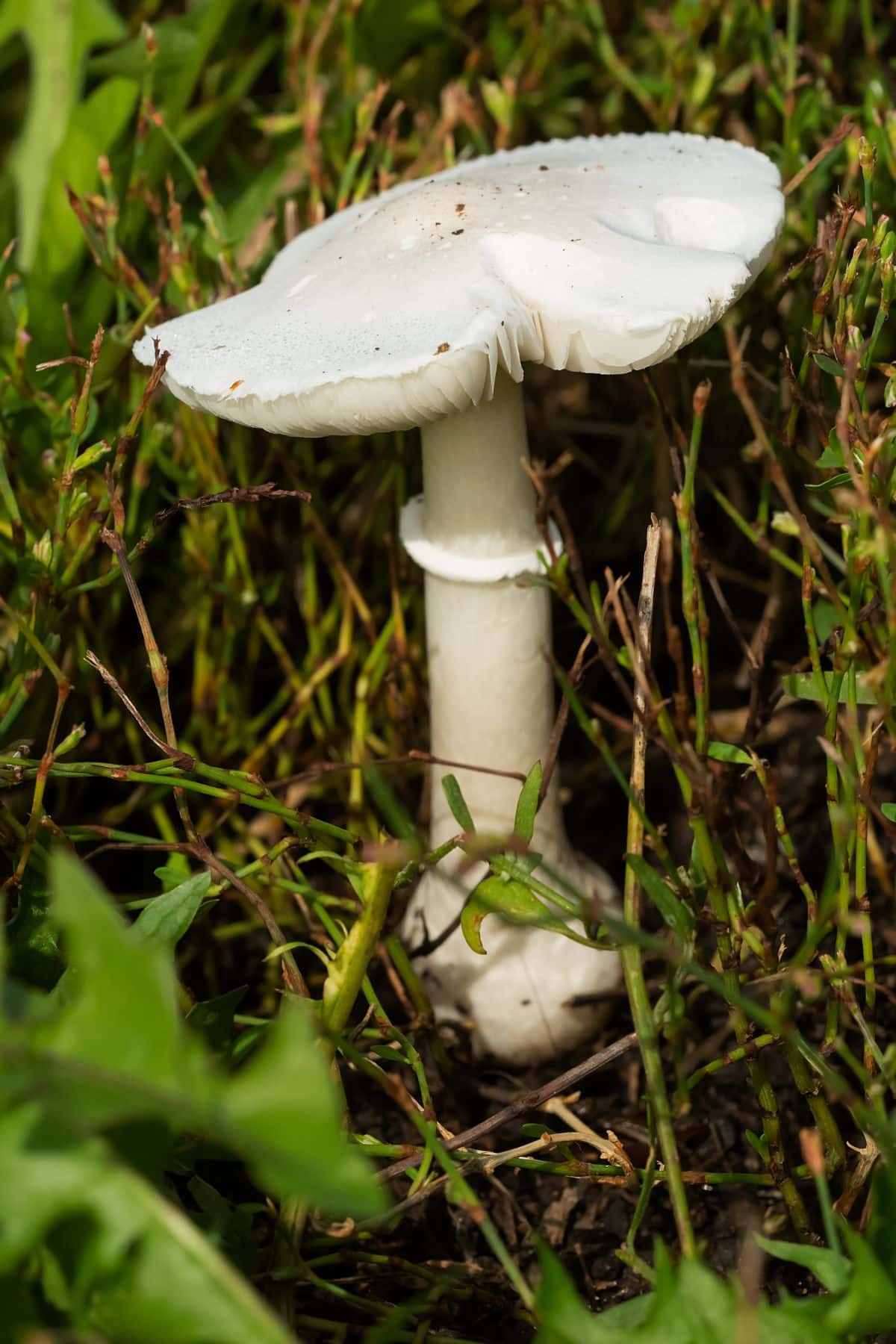
Jump to:
All About The Smooth Parasol
This is a white, chunky-looking mushroom that appears in lawns, fields, parks, and other human-disturbed lands. It has some pretty interesting common names, too! The motorcycle references are because the rounded cap is said to look like a motorcycle helmet. Why it is a “woman” or “ma’am” with the helmet is a mystery.
The smooth parasol bears a striking resemblance to species from the Agaricus genus. The genus name Leucoagaricus is derived from the Greek Leucos, meaning “white,” and Agaricus, a genus name for mushrooms with pink gills that darken with maturing brown or purple-brown spores. The genus name translates to “a group of white mushrooms akin to Agaricus species.”
The species epithet, leucothites, also draws from the Greek root leucos, which means white. However, the suffix –thites is from the term thitikos, which in Greek refers to ‘of the lowest class’ or ‘from the lowest class’. This connection gives the smooth parasol the nickname ‘the low-class white,’ suggesting its perceived inferior edible quality compared to other white agarics such as Agaricus campestris, Agaricus arvensis, or possibly even the super common supermarket button mushroom, Agaricus bisporus.
The smooth parasol was first described in 1835 by Italian naturalist Carlo Vittadini, who initially classified it as Agaricus leucothites. The species was later reclassified into the Leucoagaricus genus in 1977 by Ukrainian mycologist Solomon P Wasser. It might also be found under the name Leucoagaricus naucinus or Lepiota naucina, which are older names for it.
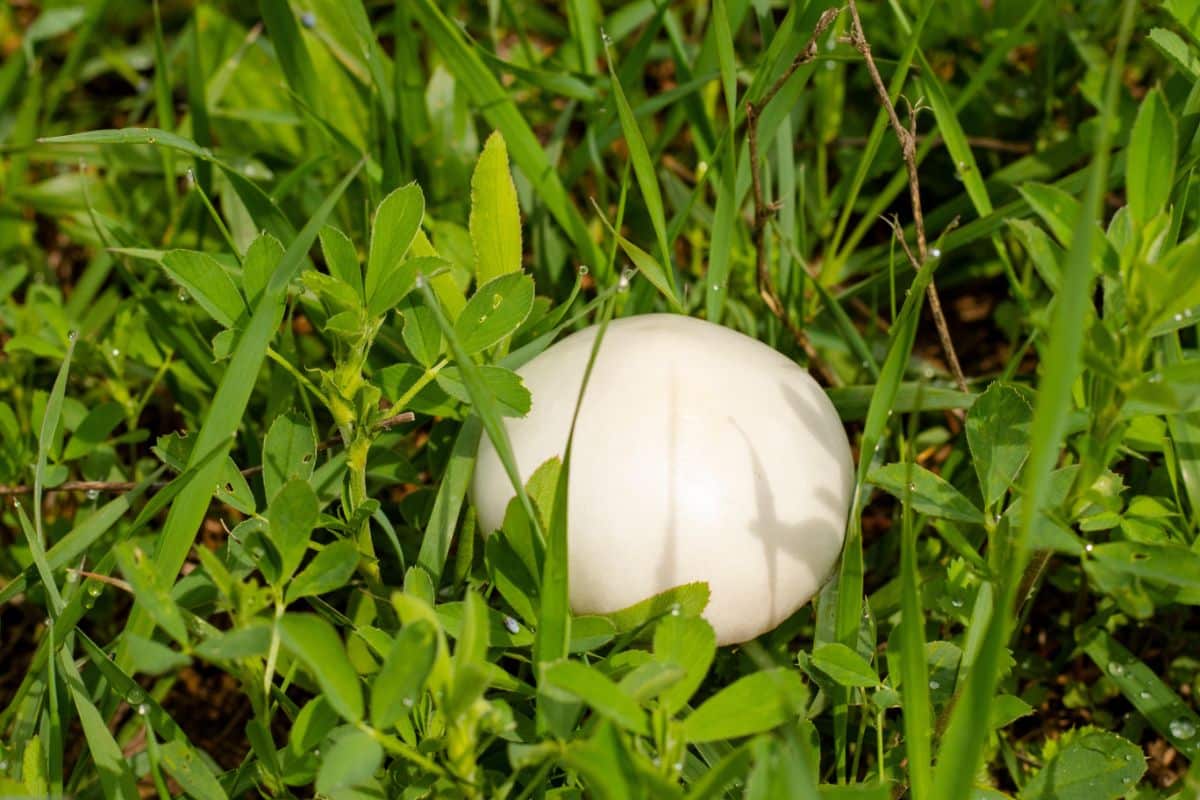
Smooth Parasol Identification Guide
Season
This mushroom is most common in fall but might also appear in spring or summer.
Habitat
The smooth parasol is a saprobic species, which means it feeds on decaying organic matter. You can usually find it growing alone, in small groups, in grassy areas, or on disturbed ground such as roadsides and cultivated areas. It often appears near conifers and is also occasionally found in woods. It is not unusual to see massive, closely grouped, or scattered fruitings of this species.
This mushroom is commonly found in pastures, meadows, yards, parks, and gardens, which means it is often encountered. It always grows from the ground, never from trees or wood.
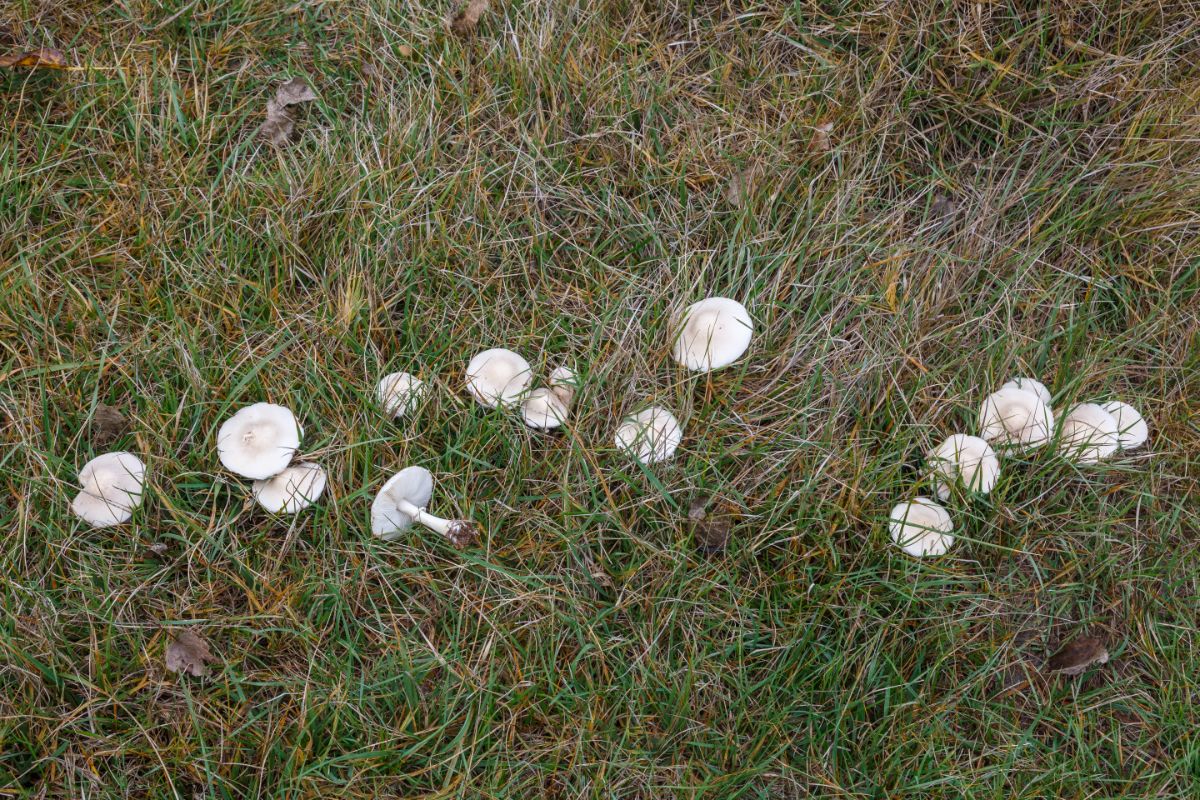
Identification
Cap
The cap of the smooth parasol is typically between 1.5 to 6 inches wide. Initially, the cap is rounded, like a bell, but it expands to become almost flat as it matures. Usually, it will retain an upraised center, a bump that makes the cap look like a white sun/beach hat The surface, when young, is not uniformly rounded – it has an odd lumpy appearance like a kid made it out of clay and couldn’t round it all out.
When young, it may also have tiny white flakes or scales on the cap that give it a silky feel. With age, though, the scales usually fall off, and the cap is bald. The color ranges from pure white to a subtle cream-yellow or flesh-colored hue as it matures.
Sometimes, the cap stains brownish or yellowish, especially around the edges.
Gills
The gills of the smooth parasol are free (not attached to the stem) and crowded. Initially, the gills are pure white but turn very pale fleshy-pink with age. There are many short gills present – these are gills that are not the entire length of the cap underside.
Stem
The stem is typically 2 to 4 inches long with a bulbous, club-shaped base. It is white, smooth, and dry and turns yellow or brown when bruised. The smooth parasol also has a white, usually moveable ring around the upper stem. The ring may fall off with age or weather conditions. Stems turn hollow with age.
Flesh, Odor, and
The flesh of the smooth parasol is white and does not change color when cut or bruised, except around the base of the stem, which may turn yellowish. The odor and taste of this mushroom are not distinctive.
Spore Print
The spore print is white.
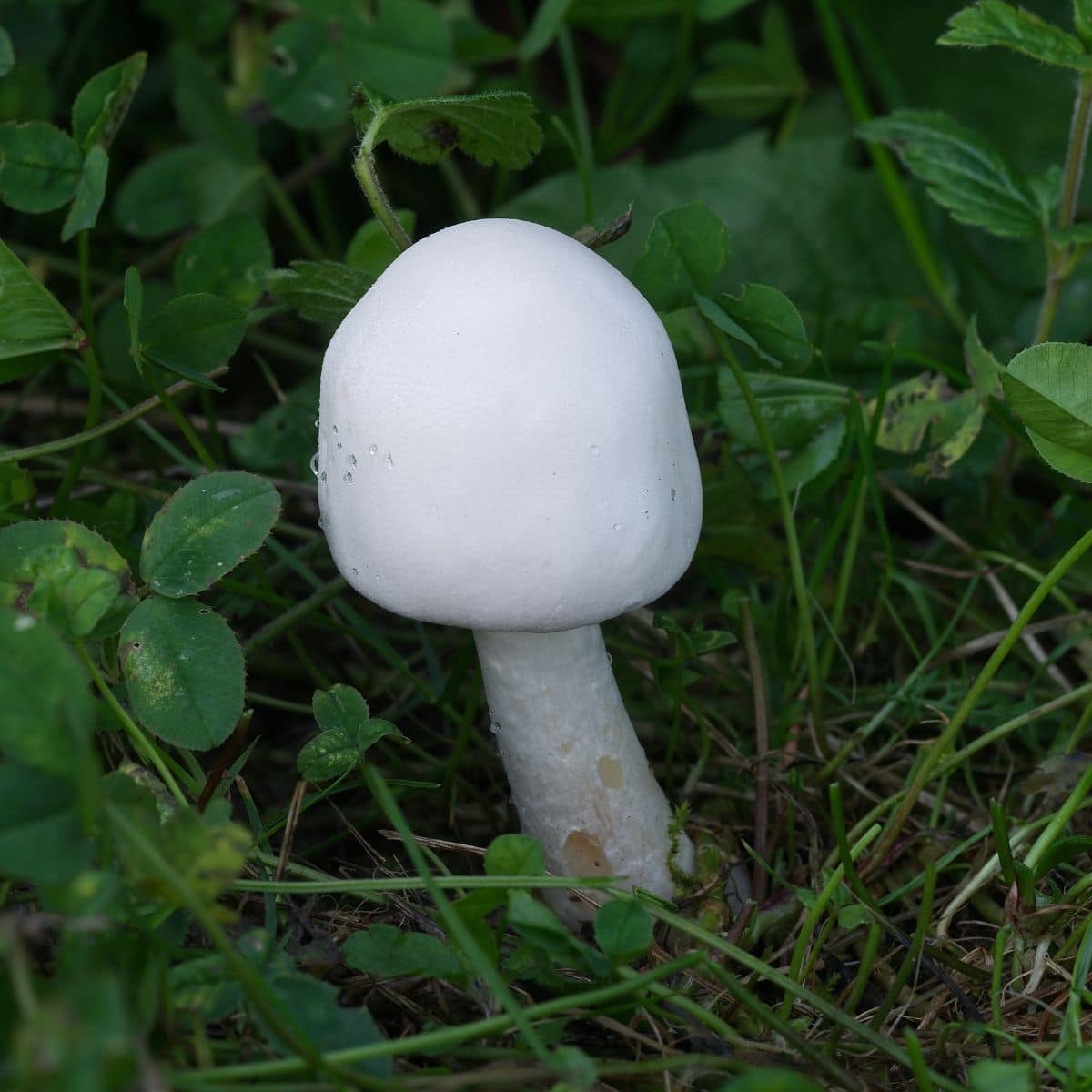
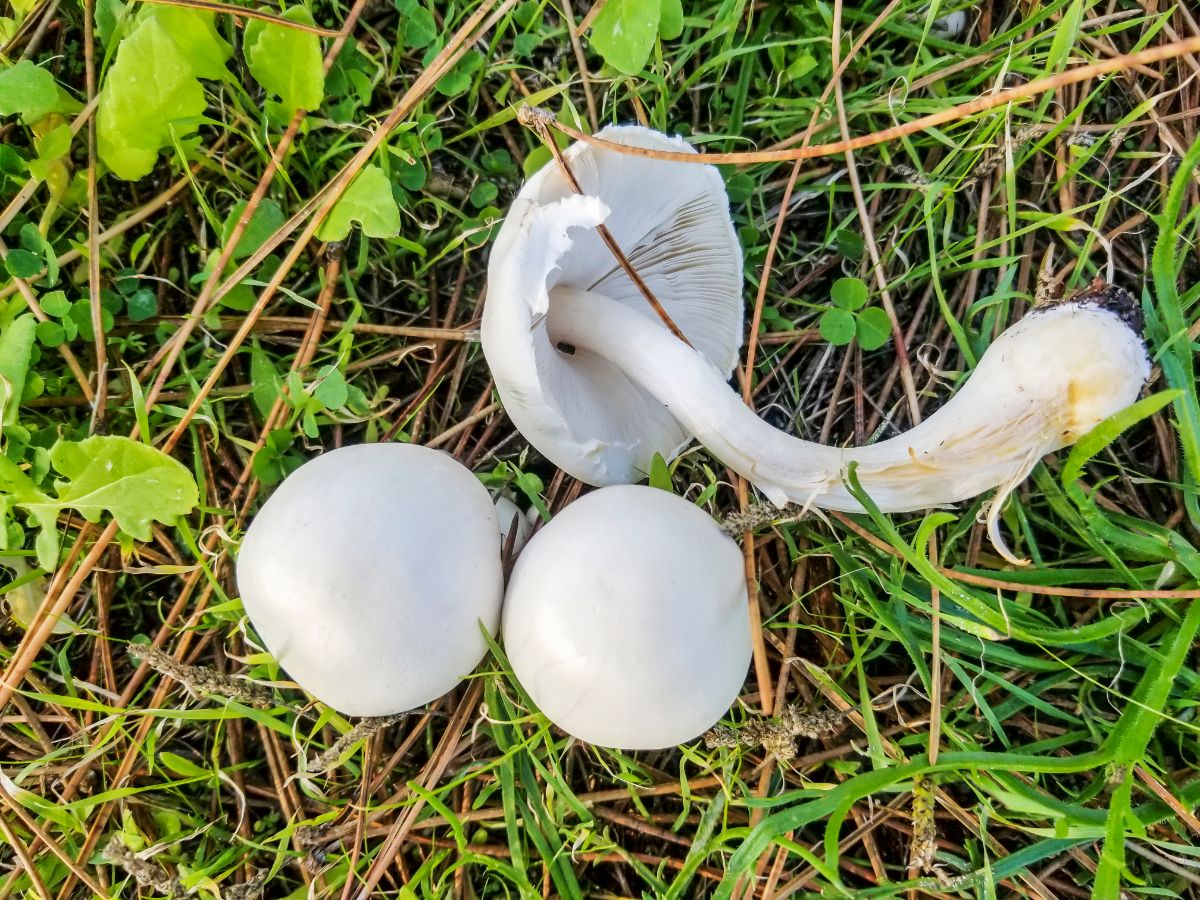
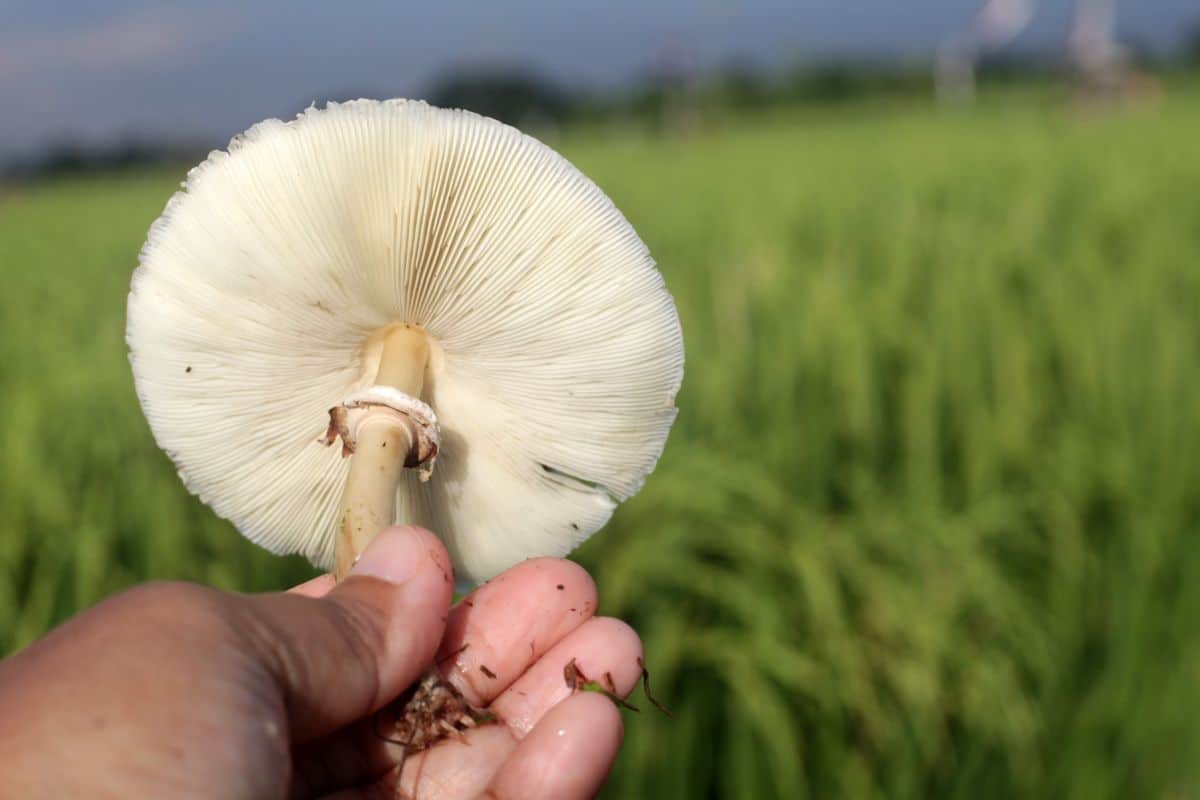
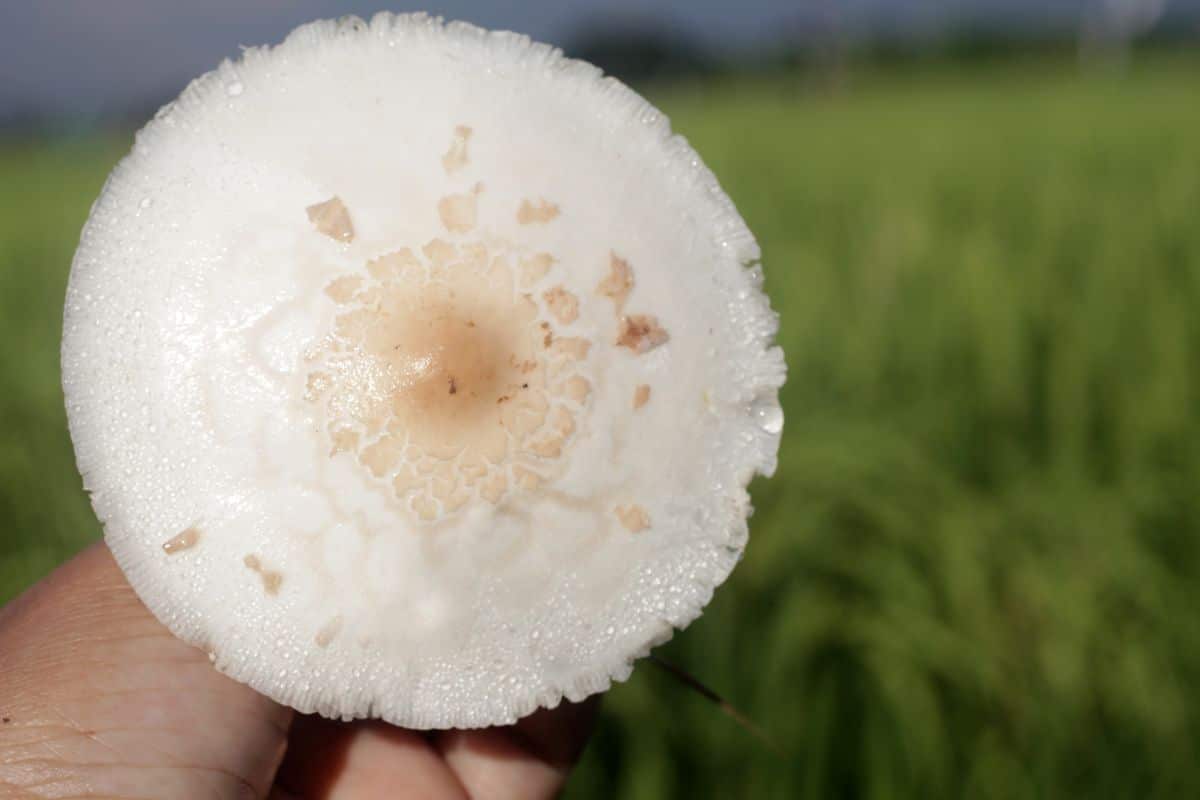
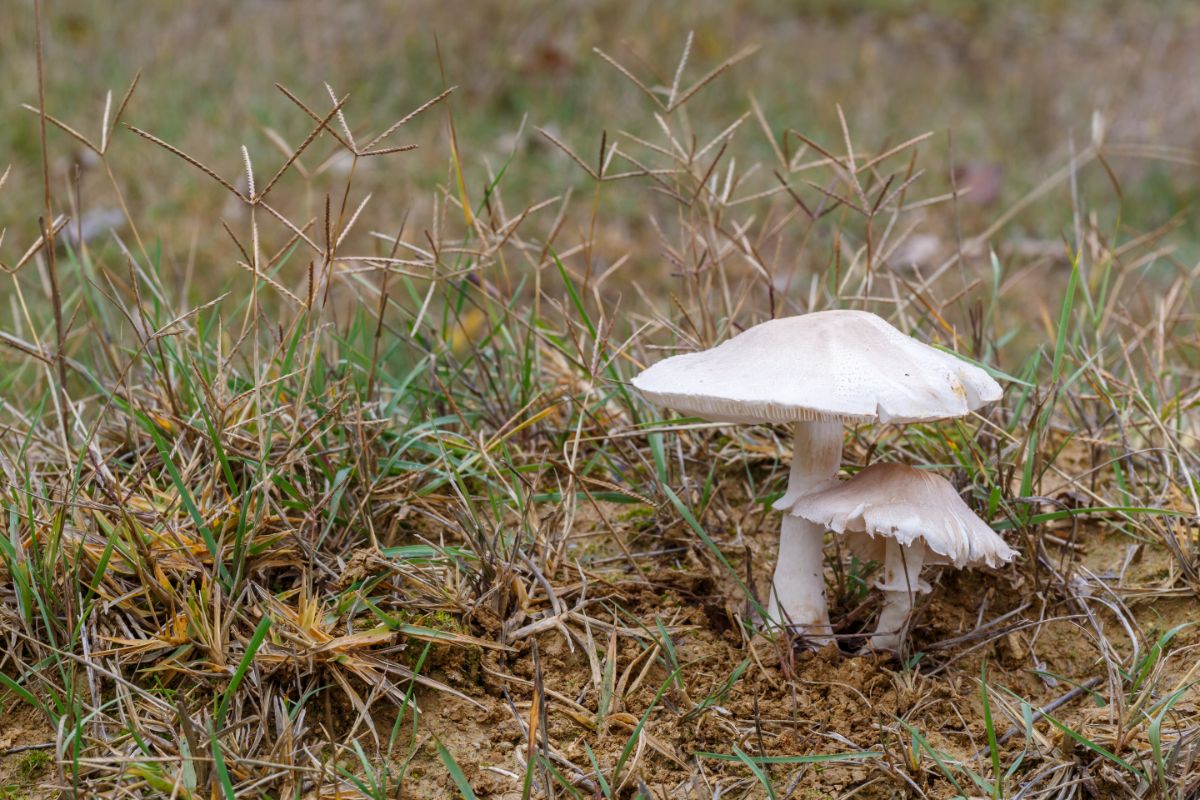
The Parasols Dilemma
In North America, we have several mushrooms called parasols. This is likely because so many mushrooms look like parasols, so it is a natural association. However, this can cause SO much confusion. And it’s just one of the reasons why serious foragers and mushroom nerds always try to use the Latin names. Many times, it’s the only way to have any basic understanding of what mushroom people are referring to.
For new foragers and mushroom nerd wannabees, this is frustrating. It’s much easier to remember Smooth parasol than Leucoagaricus leucothites. However, to be confident, especially if you intend to eat any found mushrooms, it is essential to use scientific names, especially with all the parasol-called species.
North American Parasols
Smooth Parasol (Leucoagaricus leucothites) – edible
American Parasol (Leucoagaricus americanus) – edible
Parasol (Macrolepiota procera) – edible
Shaggy Parasol (Chlorophyllum rhacodes) – edible
False Parasol (Chlorophyllum molybdites) – very toxic

Smooth Parasol Lookalikes
Field Mushroom (Agaricus campestris complex)
From above, Field or meadow mushrooms look very much like the smooth parasol. They have the same color cap and grow in fields and lawns, the same habitat as the smooth parasol. There are key differences, though, once you investigate further. Meadow mushrooms have pink gills that turn brown as the spores mature, a deep chocolate brown spore print, and a flimsy ring around the stem.

Destroying Angels (Amanita ocreata and Amanita phalloides)
From a distance, and even up close, the destroying angel Amanita is extremely similar. This is not a species you want to confuse the smooth parasol with — these can kill you. There are some significant differences that set them apart; always investigate carefully and closely.
Destroying angels are distinguished by the presence of a sac-like volva (cup) around the base of the stem (you may have to dig to find it, but always look!). They also have a skirt-like ring around the stem. The skirt hangs down unlike the smooth parasol ring, which is more simple and loop-like, not flowing.

Paddy Straw Mushroom (Volvariella volvacea)
This species has to be mentioned even though it is uncommon in North America. It is not native to N. America, but has hitched a ride with mulch and may show up in gardens, greenhouses, and landscaped areas. This is hugely popular cultivated species in Asia.
It looks a lot like the smooth parasol, which isn’t an issue since they’re both edible. However, it also looks alarmingly like the destroying angel. New arrivals to North America from Asia may confuse them (it is a very common mistake) and get ill or die. Volvariella species typically fruit in disturbed habitats and have pinkish, free gills. They have a sheath around the base of the stem, much like the destroying angel although it is generally more elongated and brown instead of white. It also does not have ring or skirt around the upper part of the stem.

Big Sheath Mushroom (Volvopluteus gloiocephalus)
aka Rose Gilled Grisette and Stubble Rosegill
This species can appear very similar to the smooth parasol, with a white cap, white stem, and appearance in urban or disturbed areas. However, it lacks a ring around the stem, has a pink spore print and pink mature gills, and is usually found growing in gardens, lawns, woodchips, and other urban places. It also has a white cup (volva) around the base of the stem. This species is widely distributed in eastern North America.
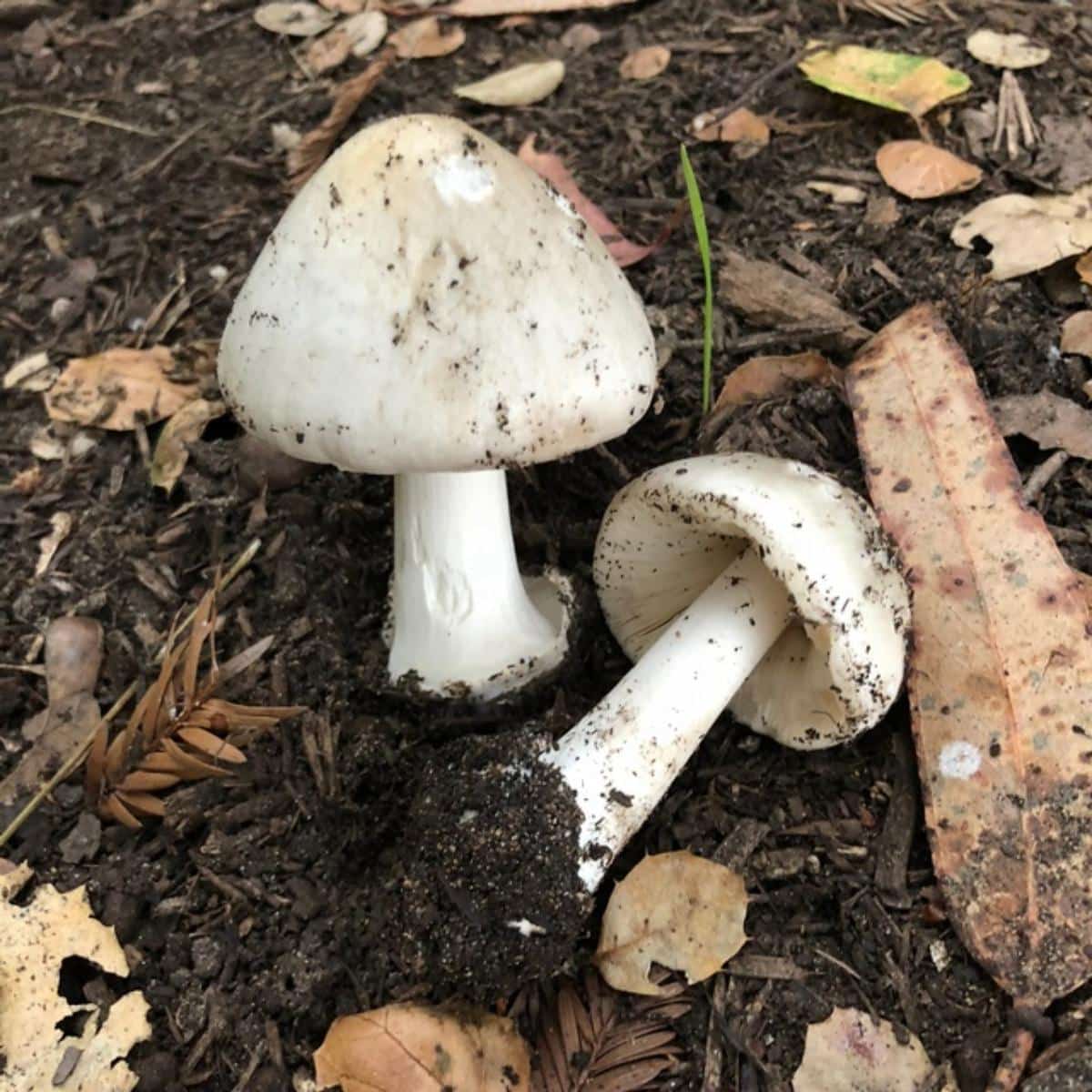
Smooth Parasol Edibility
While the smooth parasol is generally considered edible, caution is advised due to the potential for confusion with poisonous Amanitas. Some guides even suggest that the smooth parasol is slightly poisonous, causing stomach upset. This may be true for some people (as can happen with any wild mushroom) or might be because it was confused with something else. If you choose to consume this mushroom, be very confident of your identification and cook it very thoroughly. And always do a spore print!
When trying a new species, it’s always best to try just a small amount first in case you have a reaction to it. Never eat a whole ton at once. Wait 24 hours for any signs of stomach upset or issues.
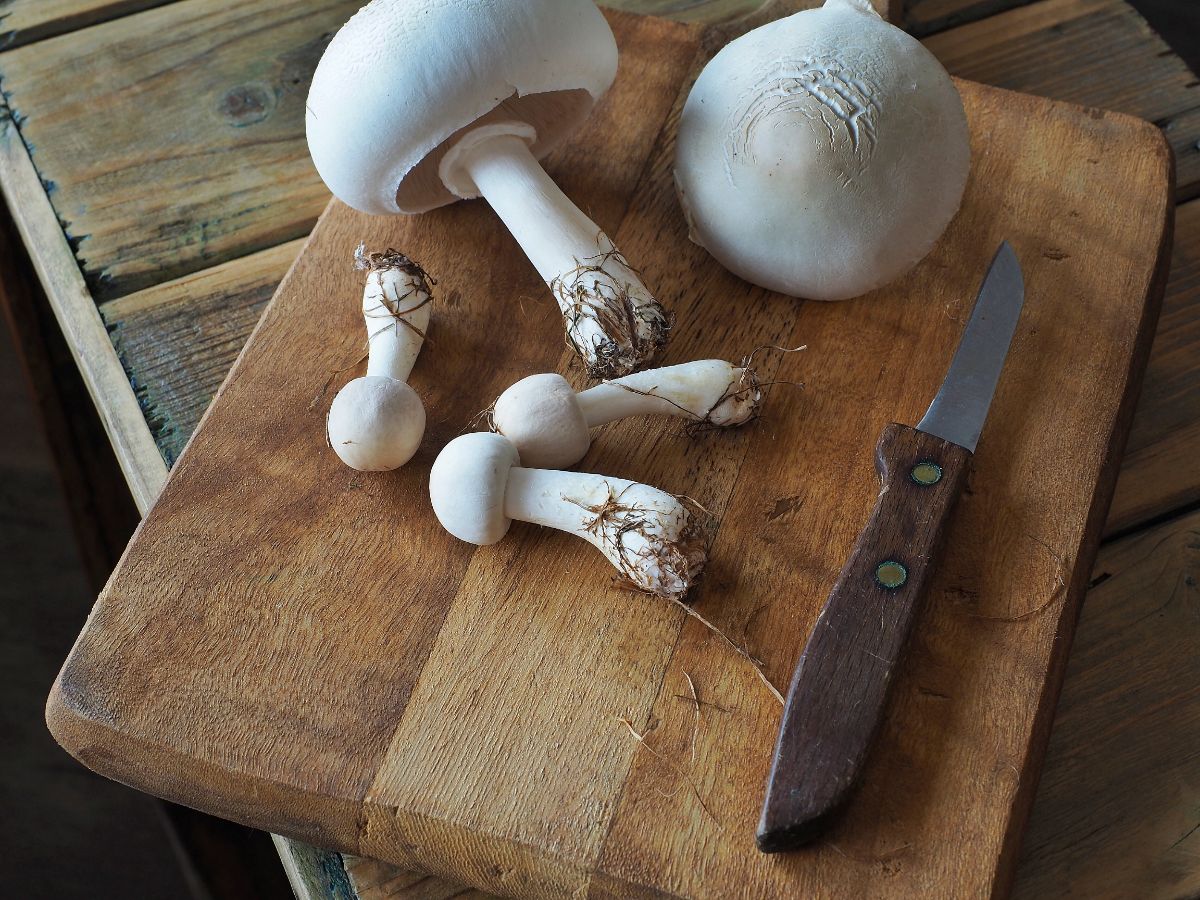
Smooth Parasol Mushroom Common Questions
Does the smooth parasol mushroom have medicinal properties?
Currently, there’s no documented medicinal use of the smooth parasol.

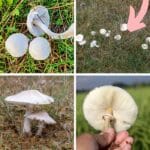
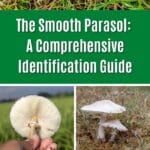
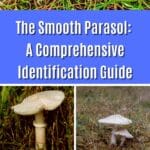
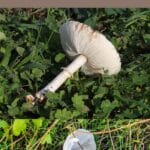

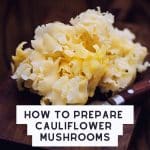
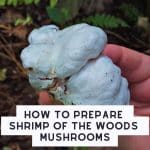
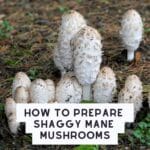
Leave a Reply